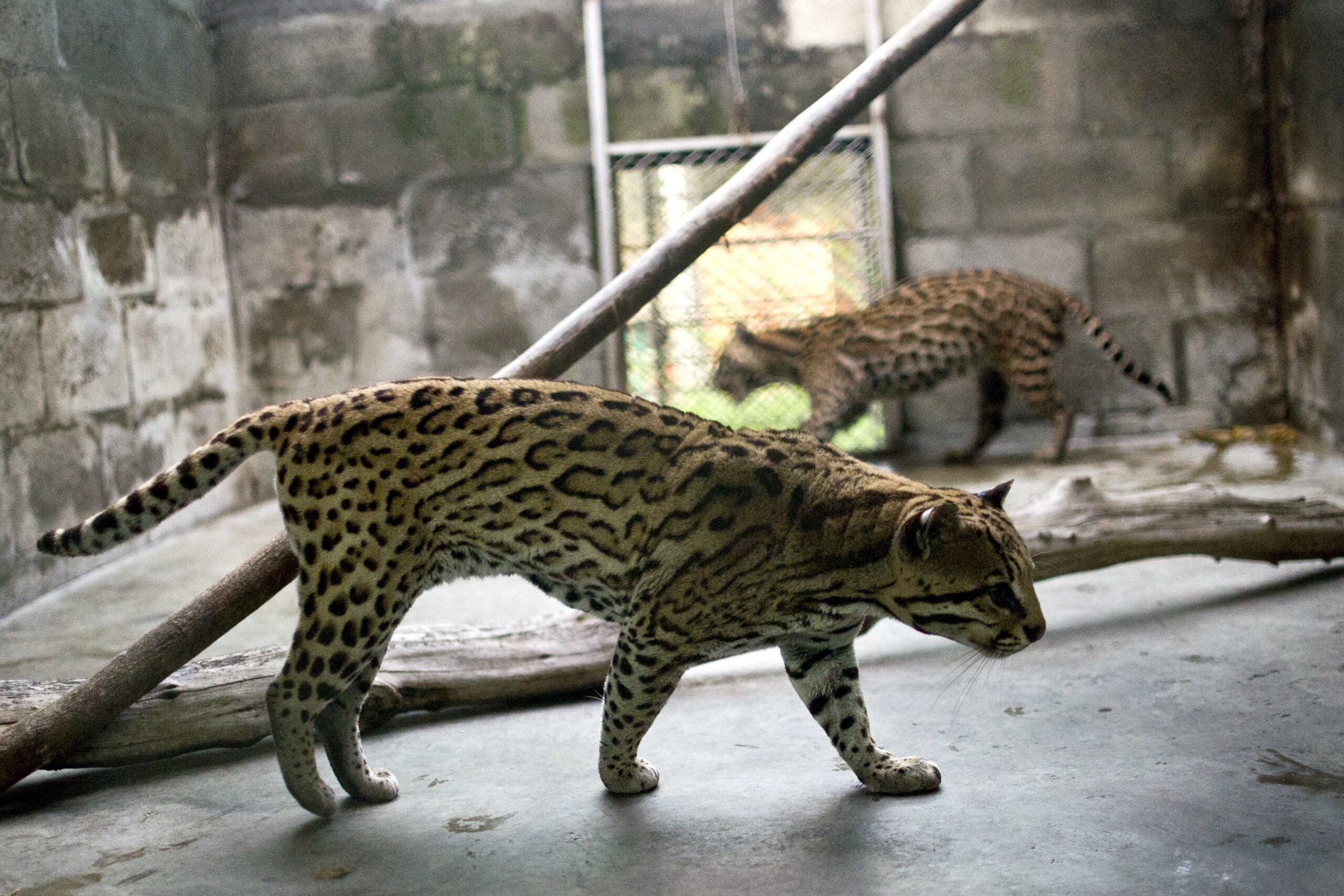In Happy Animal News, Six Ocelots Were Rescued From Poachers In Ecuador
Photo via Getty
If you’re looking for some happy news, we have you covered. In September, six female ocelots who had been rescued by wildlife traffickers were released back into the wild in Ecuador. The event happened after the ocelots had been “rehabilitated” for a year.
The six ocelots were released into their natural habitat in the Cotacachi Cayapas Reserve near the border of Colombia, according to Ecuador’s environment ministry.

Poached animals that are rescued are usually rehabilitated due to malnutrition, mutilation, and even psychological distress. After all, they have been taken from their native habitat and forced into foreign, and often scary, situations.
According to Placido Palacios, the director of the rescue center where the ocelots were rehabilitated, the cats were released “in an area where humans have no contact with them and where they can live in their habitat and develop freely.” They were also dewormed and microchipped in case they need to be identified in the future.
Ocelots are medium-sized spotted wild cats native to the southern hemisphere of the Americas and Caribbean. Ocelots are also well known for being deeply connected to Aztec and Incan spirituality.
While ocelots are classified as an a “least concern” species on the International Union for Conservation of Nature’s “Red List of Threatened Species”, they have none the less been the target of poachers in Ecuador.

“The problem of species trafficking is great despite the efforts in recent years,” wildlife analyst Lucia Luge told Agencia Efe. “Each year, we’re finding animals that are victims of internal trafficking that are taken to homes and some in biological collections that are taken out of Ecuador.” Over the past seven years, the Ecuador environmental ministry, in conjunction with rescue organizations, have rescued over 6,000 wild animals from illegal trafficking*.
In Ecuador, illegal wildlife traffickers target these big cats for multiple uses. Some ocelots end up as illegal pets for exotic animal collectors. Sometimes they are killed for their fur or their skin or used for taxidermy purposes. Poor Ecuadorians turn to illegal breeding and hunting as a last resort to support themselves. In Ecuador, there are no comprehensive studies of wildlife trafficking, which creates a sort of information void that makes it hard for organizations or the Ecuadorian government to address the issue.
According to One Green Planet, nearly 52% of the world’s species have been wiped out in the last 40 years, and a large part of this mass extinction is due to poaching.
Experts believe that, internationally, the business of wildlife trafficking generates $10 billion to $26 billion per year*. After drugs, weapons, and human trafficking, wild animal trafficking is the most lucrative and commonplace illegal trade in the world.
Wild animal trafficking contributes to habitat destruction as well as the destruction of the planet’s biodiversity. When poachers capture and kill wild animals en masse, it’s not as if there are no consequences. Humans have the ability to radically transform the planet—for better or for worse.




